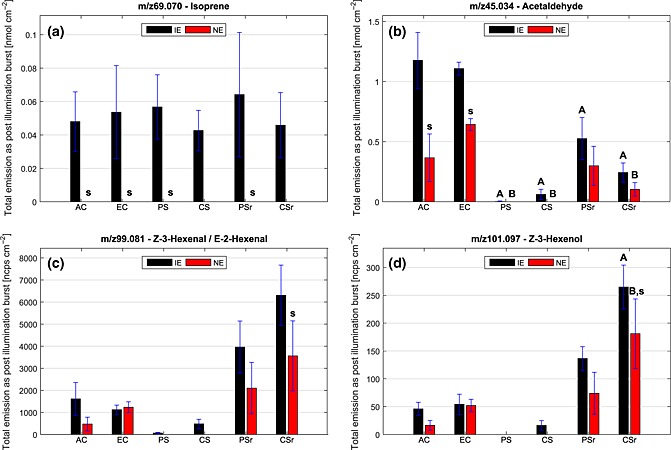Figure 3.

Mean total emissions (±SE) of isoprene (a) and selected oxygenated volatile organic compounds (VOCs) (b–d) in form of post‐illumination bursts (PIBs). In the PS and CS scenarios, all PIBs except those of isoprene were strongly suppressed. Isoprene non‐emitting (NE) species generally showed less intense PIBs of oxygenated VOC than isoprene‐emitting (IE) species. PIBs of the C2 compounds like acetaldehyde were less intense in the stress recovery treatments (PSr and CSr) than in the corresponding control treatment (EC). Contrary, PIB of C6 compounds like hexenal and hexenol were enhanced in plants recovering from heat and drought spell. Letters denote statistically significant (P < 0.05) different values: (s) between IE and NE plants within the climate scenario, (A) in regard to the control treatment (EC) within IE plants and (B) in regard to the control treatment within NE plants (cf. Supporting Information Table S1). AC, ambient control; EC, elevated control; CS, chronic stress; PS, periodic stress; CSr, chronic stress recovery; PSr, periodic stress recovery.
